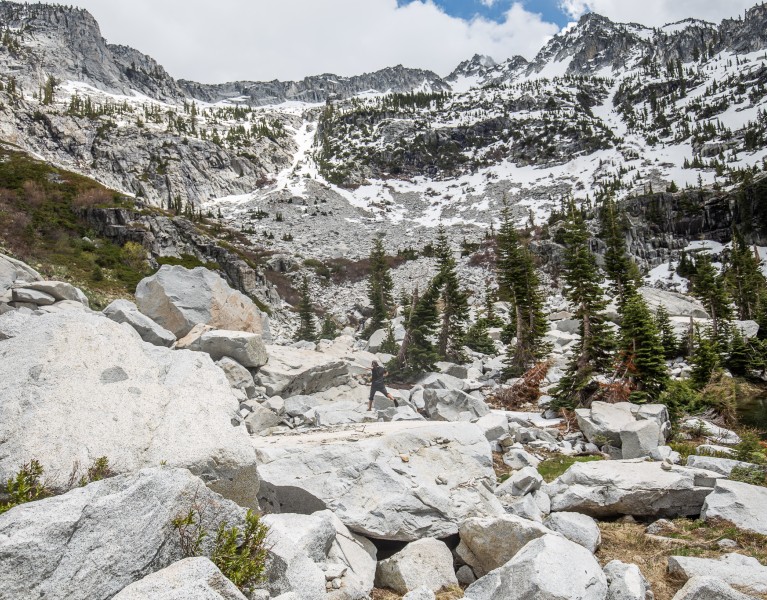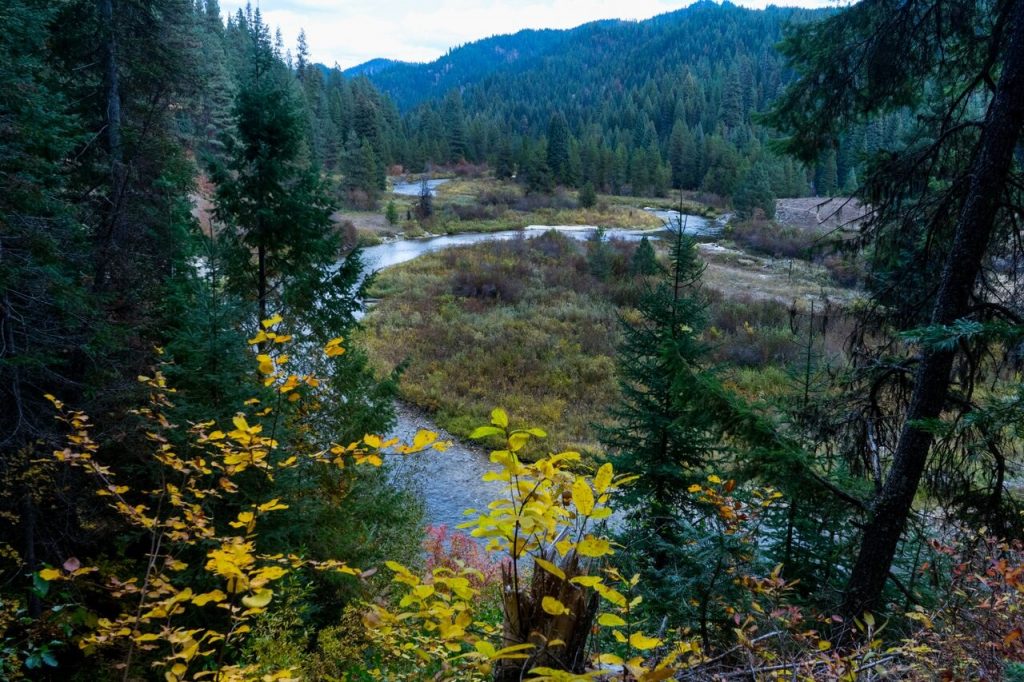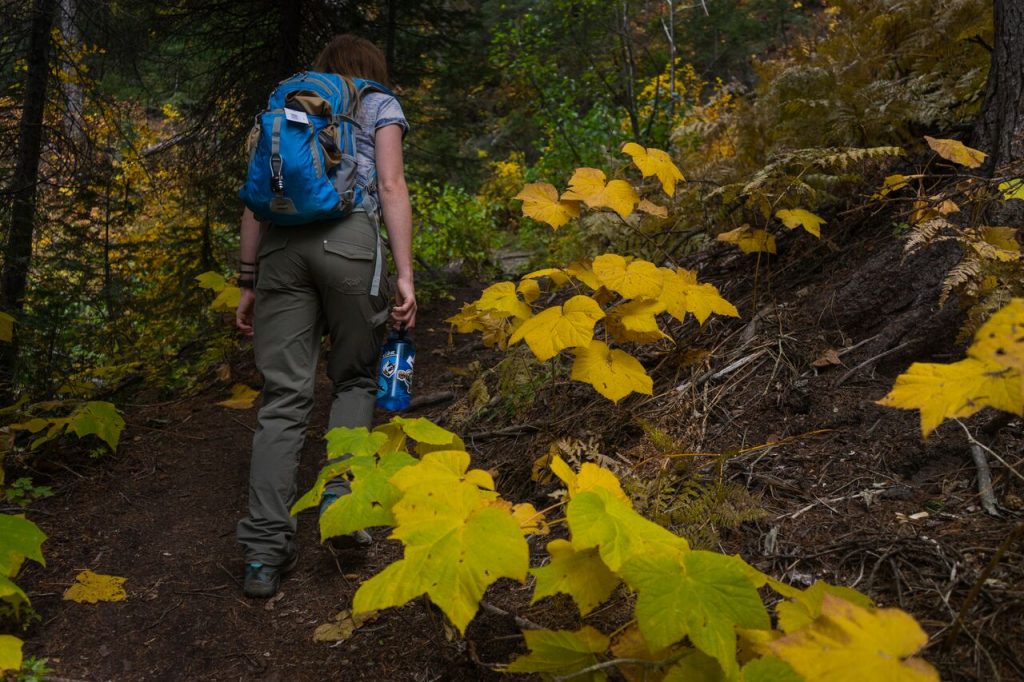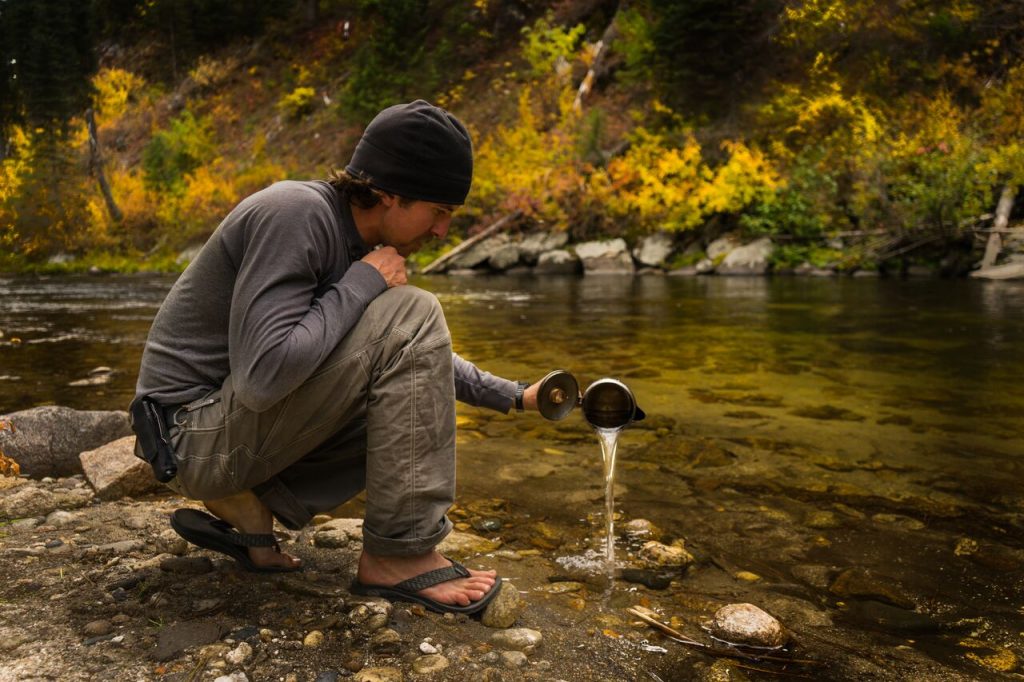
Guideposts for Planning Your Thru-Hike
Table of Contents [Show]
I remember when I first saw a promotional poster for "Wild," a story based on Cheryl Strayed's experience on the Pacific Crest Trail. When I saw Reese Witherspoon with that enormous, overloaded backpack (the 70s called! They want their external pack frame back!), her cotton tee-shirt, her unscuffed, clunky hiking boots, and her denim (?) shorts, I nearly fainted. Is this Hollywood's portrayal of modern hiking? Out of protest, and without any prior knowledge of the author's message, I ignorantly refused to see the film. I'd heard that it was about a woman who, on impulse and without any trail experience, took on one of the most challenging North American treks... and that was enough for me. I know how much planning goes into thru- and section- hikes, and I hate seeing media portraying dangerous practices. Before I admit how incorrect I was about this biopic, let me point out where Strayed left the trail—so to speak—in preparing for the PCT. Just in case someone saw the poster or book cover, and decided hey... if she can do it, so can I!
The Research Trail's Already Been Blazed

When Strayed tackled the PCT in 1995, mainstream internet use was in its infancy. Today, hikers have endless sources of first-hand information, access to reviews, and the ability to download current maps and trail conditions. We also have Postholer.com, the hands-down best portal to all of the above for all the major North American thru-hikes. I found the online hiker journals incredibly useful in gaining insight into how to select and organize my gear, plan my resupply deliveries, and mentally prepare for life on the trail. Here are some other top-of-the-chain websites from which to draw inspiration and guidance:
- Pacific Crest Trail Association
- Appalachian Long Distance Hikers Association
- Continental Divide Trail Coalition
- The Great Trail (Canada)
These links will save time, money, and heartache, and I strongly recommend that those who are just barely flirting with the idea of a section-hike or thru-hike stop and soak up as much wisdom as they can. And from here on out, I've included links to websites developed by experienced individual hikers. Get your printer fired up, create a new "favorites" folder, and find a comfortable chair because you're about to become immersed in the online thru-hiker community.
Know Your Target Weight
Even couch potatoes have heard tales of whittled-down toothbrushes and packs the size of coin purses. Some hikers go to extremes to reduce their pack weights, while others take advantage of lightweight materials to afford them space and weight for a few extra luxuries. Ray Jardine, the godfather of ultralight backpacking, published his first trail guide in 1992, but his 1996 updated edition changed everything. His approach to minimizing equipment became known as the "Ray-Way", and he developed ultralight "tarp tent" shelter designs and "sew-it-yourself" kits for everything from sleeping bags and quilts to packs, using modern fabric technology. (Some of his other products, such as his "blood cleaner" bracelet, haven't quite had the same impact... but even Edison struck out a time or two.). Jardine revolutionized long-distance backpacking and made the sport more enjoyable and accessible for a whole generation of hikers. Andrew Skurka has left his own mark on lightweight "speed" hiking... and his own info-rich website is an ideal place for entry-level backpackers, pack hunters, and trekkers. How much you plan to pack depends on your desire for trail comfort, your hiking pace, your hydration needs, and your resupply strategy. A very useful trip planning calculator first developed two decades ago and still relied upon today is Craig's PCT Planner. When used with other resupply guides, including one linked on his own page, you can determine how many days you can expect to travel between resupply points.
Backpacking Gear vs Lightweight Backpacking Gear

By the time I watched Reese Witherspoon struggle with the cheap, car-camping-style dome tent on her character's first night on the trail, it was clear that the story was making a point to underscore Strayed's lack of research. But when she arrived at Kennedy Meadows, all the other tents on the set were the same. I wondered, "Budget shortfall? Did they have their crews bring their kids' scouting gear with them?" There are about three different classes of thru-hike shelters. You won't see cheap dome tents among them, and even high-end, so-called "backpacking tents" weigh in at about six pounds... too much for the average single hiker. You'll select from single or double-occupancy shelters or models that use trekking poles for support. Some shelters are little more than overhead tarps. A few hikers opt for chrysalis-style bivy sacks, and others go without any shelter at all for the majority of their trip. Hammock tents aren't suitable for most thru-hikes since they depend on trees to hold them. You'll find a million different gear reviews for long-distance hiking packs, tents, and sleeping equipment (bags, quilts, pillows). I love detailed, opinion-rich posts like this one, a reviewer's comparisons between gear he's used on previous hikes, and insight into what he'd use on his next trip. You can have the highest-rated equipment in the world, but if it doesn't suit your hiking style? Those stars don't mean a thing.
Meal Prep

You won't find nesting steel cookpot sets on the PCT, AT, or CDT and these days, even high-quality MSR backpacking stove systems like the one used in "Wild" don't make the cut unless fire restrictions require them. Stoves made from cat food or soda cans and fueled by denatured alcohol are a big hit on major trails—though they somehow qualify as "open flame" by the USFS—and most hikers only bring along a single titanium pot, a spork, and maybe a silicone drinking cup. As for food, you'll find recipes out there for packed-at-home, just-add-water "freezer bag meals" as a more compact, lower-cost, and highly customizable alternative to store-bought dehydrated pouch meals, or you'll organize grab-and-go snacks to keep your energy up throughout the day. The Ministry of Happiness hiking blog's "Thru-hike Food Recommendations & Recipes" is just one helpful resource index for meal planning articles, though you'll find a hundred more references on nearly any of the other links scattered throughout this page.
Pack the Right Clothing
On one thing most all thru-hikers agree: Pack lightweight layers of synthetic fabrics. At the risk of poking the cotton industry bear, I'll whisper something every outdoor athlete shouts: cotton kills. It chafes, takes forever to dry, and doesn't wick moisture away from the skin. Unlike wool and synthetics, it doesn't keep you warm even when it's wet. AT Hiker has the best thru-hiker clothing breakdown with lots of "whys" and "hows". It's a straightforward look at each type of clothing and various materials designed to keep you safe under specific conditions. But you don't want to get your trail clothing just anywhere. Clothing designed for rugged outdoor use, made with durable materials, always outperforms cheap, big-box "sportswear". I tend to stick with outdoor clothing companies operated by world-class outdoor experts. KUHL, for example, has created patterns cut to facilitate body movement, and they use fabrics designed to repel and wick moisture away, block wind, and retain heat. As for shoes, you'll notice that the big, clunky lumberjack boots that became Strayed's nemesis are, like the Edward Abbey character of the same name, seldom seen. Lighter packs allow for latitude in footwear, and trail runners or even marathon shoes have replaced Frankenstein feet. But bring plenty of moleskin, just in case.
A Note About Emergency Gear
Speaking of blisters, no hiker should travel without a basic emergency and first aid kit. Philip Werner dissected his kit components for SectionHiker.com, and there's plenty of useful reader feedback in the comments section to get you started. We have a great article on wilderness survival kits and it backs up the rule that there is no single kit for every situation. Just don't set foot on any trail without one.
The Journey is Yours Alone
It took a lot of coaxing for me to finally see "Wild". Aside from the planning issues, I loved the story. Her journey really wasn't about her bad gear choices and the resulting pain she endured on the PCT, but about her coming to terms with the choices she made and pain she experienced in her life until that point. Something about thru-hikes and wilderness adventures help us examine lives under the cold light of day, and come out the end with more intention and self-acceptance. We tend to shed what tortures us as we pare our lives down to the essentials. But most of us prefer to leave our excess baggage at the trailhead, and experience thru-hiking with the confidence gained through informed gear selection and well-researched hiking strategies. That way, if we end up chucking our shoes down a gully, it's not because they don't fit.


